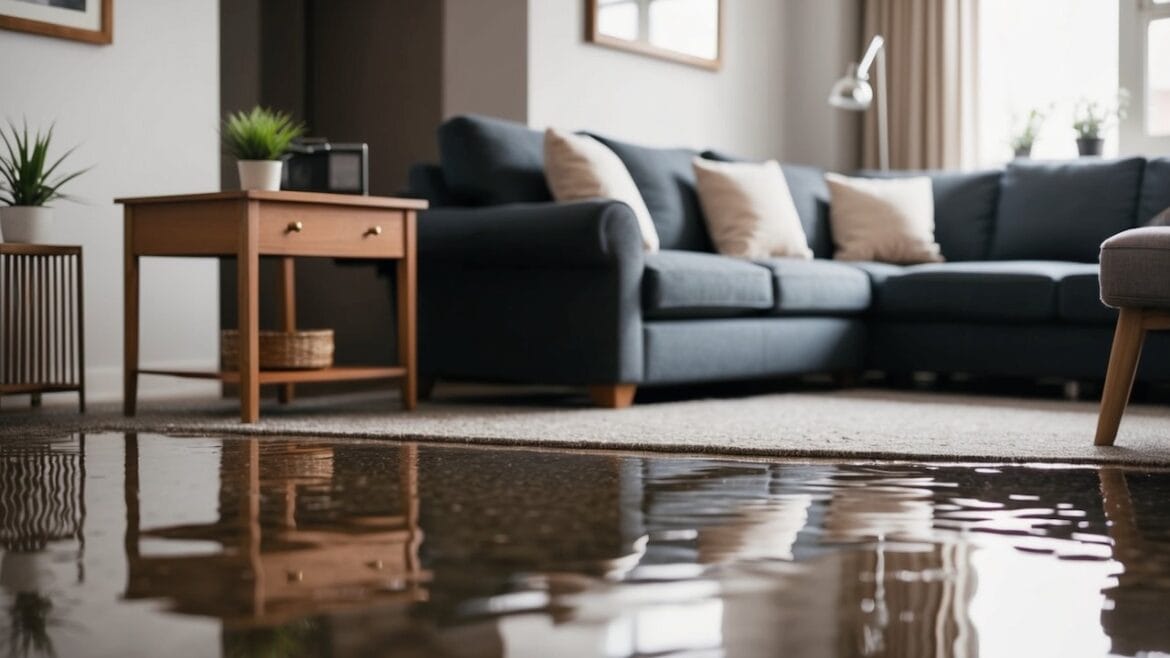Water damage can be a homeowner’s nightmare, especially when it comes to carpets. If your carpet has been flooded, it’s crucial to act quickly to minimize damage and prevent mold and mildew growth. Here’s a concise guide on how to effectively dry out a water-damaged carpet.
1. Inspect or Assess Carpet
Before you begin drying out your carpet, assess the extent of the water damage. If the water is clean (from a broken water pipe, for example), you may be able to salvage the carpet.
But if the water is contaminated—from storm flooding or sewage—it’s best to call in professionals for safe removal.
Depending on the source and contents of the water, you may need to remove your old carpeting and carpet padding, as well as any subflooring that the dirty water soaked through. Subflooring may look and feel dry, but “dry to the eye isn’t always dry,” and a moisture meter will help you determine how wet the flooring actually is. Subflooring is typically plywood, and it’s very water-absorbent.
2: Remove Excess Water
Use a wet/dry vacuum to extract as much water as possible from the carpet. Start from the edges and work your way towards the center to avoid pushing water deeper into the carpet fibers. If you don’t have a wet/dry vacuum, you can use towels to soak up excess water, but this will be far less effective, and will only remove a mass of the water, not all of the water.
To properly dry a carpet, you will need a wet/dry vac, several fans running, and great air circulation.
3: Lift the Carpet
If the carpet is still saturated, consider lifting it to allow air circulation underneath. This will help speed up the drying process. Be cautious while lifting the carpet to avoid damaging the backing.
4: Use Fans & Dehumidifiers
Set up fans to circulate air around the affected area. This will help evaporate moisture trapped in the carpet. Additionally, use dehumidifiers to reduce humidity levels in the room, which is important in preventing mold growth. Aim for a relative humidity levels of below 50%.
5: Clean & Disinfect
Once your carpet is dry, it’s important to clean and disinfect it to prevent mold and mildew. Use a carpet cleaner or a mixture of water and vinegar to eliminate any remaining bacteria.
6: Monitor for Mold Growth
Keep an eye on your carpet in the days following the drying process. If you notice any musty odors or strange smells, or you see visible mold, it is in your best interest to calla professional for proper dry-put and mold remediation.
Mold can begin to grow within 24 to 48 hours in damp conditions, so fast action is key.
The three most important things you can do after a flood that has wet your carpet are:
- Try to determine how much water exactly has soaked your carpet. This involves actual math calculations, even if simple math is used: How long was the pipe broken? How much water came out of it? Where did that amount of water go?
- Use a wet/dry vacuum to remove at least that amount of water from your carpet: Count the number of times you fill up and empty the wet/dry vac’s bucket—usually 4 or 10 gallons, and keep doing so until you have removed all water.
- Increase air circulation while running dehumidifiers and fans to dry both the carpet and room.
Summary
Drying out a water-damaged carpet requires quick and effective action. It’s a lot of work, but the cost of not doing that work is often worse in the long run, as wet carpets and subflooring can cause a host of mold problems and health concerns.
At Mold Solutions, we specialize in restoring homes in Tampa Bay and can help you ensure your carpets and home remain safe and mold-free.
If you have any questions or need assistance, please don’t hesitate to reach out to us.







